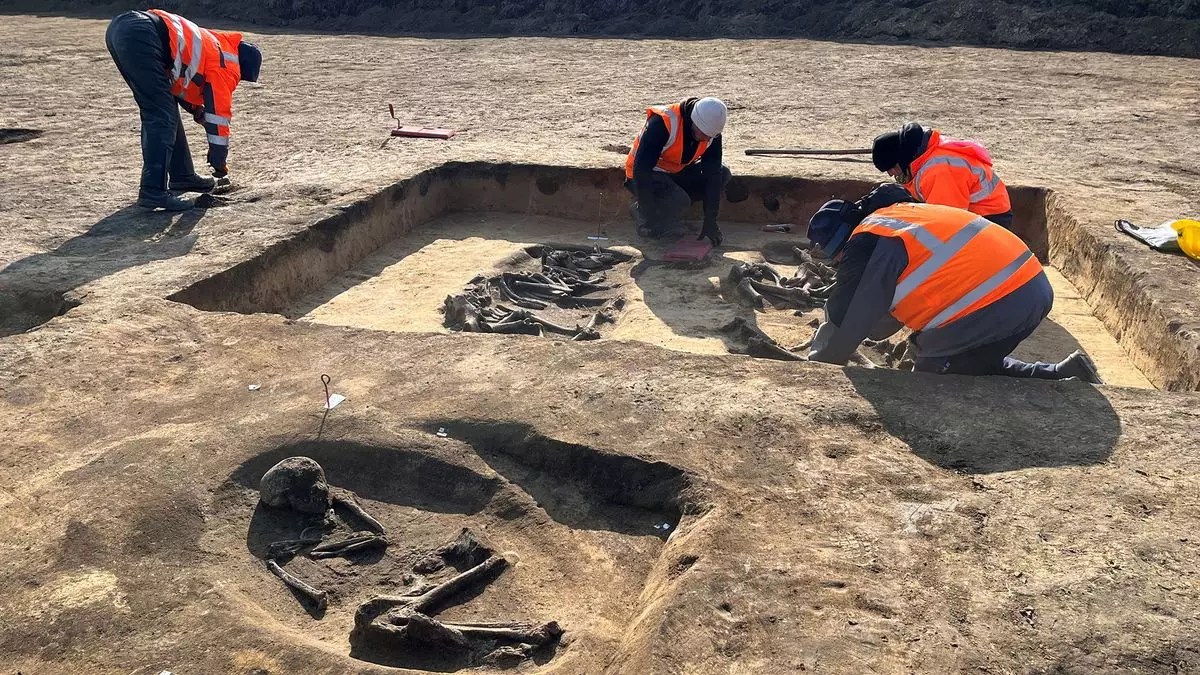The site of Intel’s Magdeburg mega-fab in Germany, currently a field with several holes, has revealed significant historical artifacts. Among the discoveries are the remains of multiple burial mounds, including a chariot burial, dating back to the Neolithic period. Archaeologists from the State Office for Heritage Management and Archaeology Saxony-Anhalt uncovered two approximately 6,000-year-old monumental mounds housing wooden grave chambers with several burials each. Dr. Oliver Dietrich emphasized the importance of the landscape to prehistoric people over an extended period, with evidence of a processional route for sacrifices and burials.
Since 2023, archaeologists have been examining the site just outside of Magdeburg, where Intel intends to construct its largest European facility, known as the “Silicon Junction.” Spanning 300 hectares, the industrial park includes Eulenberg, a small hill that played a crucial role in the early Neolithic period settlement due to its fertile soil. The area under scrutiny has proved to be a highly complex burial and ritual landscape used over a long period. The forthcoming semiconductor plant by Intel necessitates robust foundations and metal exterior walls, requiring extensive excavation before the manufacturing equipment arrives.
While the State Office for Heritage Management and Archaeology Saxony-Anhalt has not disclosed plans for the affected burial sites, it is probable that they will be relocated for preservation. The archaeologists will continue their work on the site until April, preparing for Intel’s subsequent arrival a few months later. Building cutting-edge fabs calls for substantial groundwork and infrastructure to accommodate state-of-the-art technology. The swift transformation from an empty field to a sophisticated facility is exemplified by similar projects like TSMC’s Fab 21 in Arizona, expected to be operational by 2024. Intel’s Magdeburg fabs are scheduled to be operational no earlier than late 2027, aligning with the company’s advanced semiconductor manufacturing processes.
Overall, the discovery of ancient burial mounds at Intel’s future mega-fab site in Magdeburg sheds light on the historical significance of the landscape and the importance of preserving such archaeological treasures. The coexistence of modern industrial progress and ancient heritage underscores the delicate balance between technological advancements and the preservation of cultural heritage. As Intel proceeds with the construction of its facility, careful consideration must be given to the protection and relocation of these valuable historical artifacts to ensure their conservation for future generations to appreciate and study.


Leave a Reply